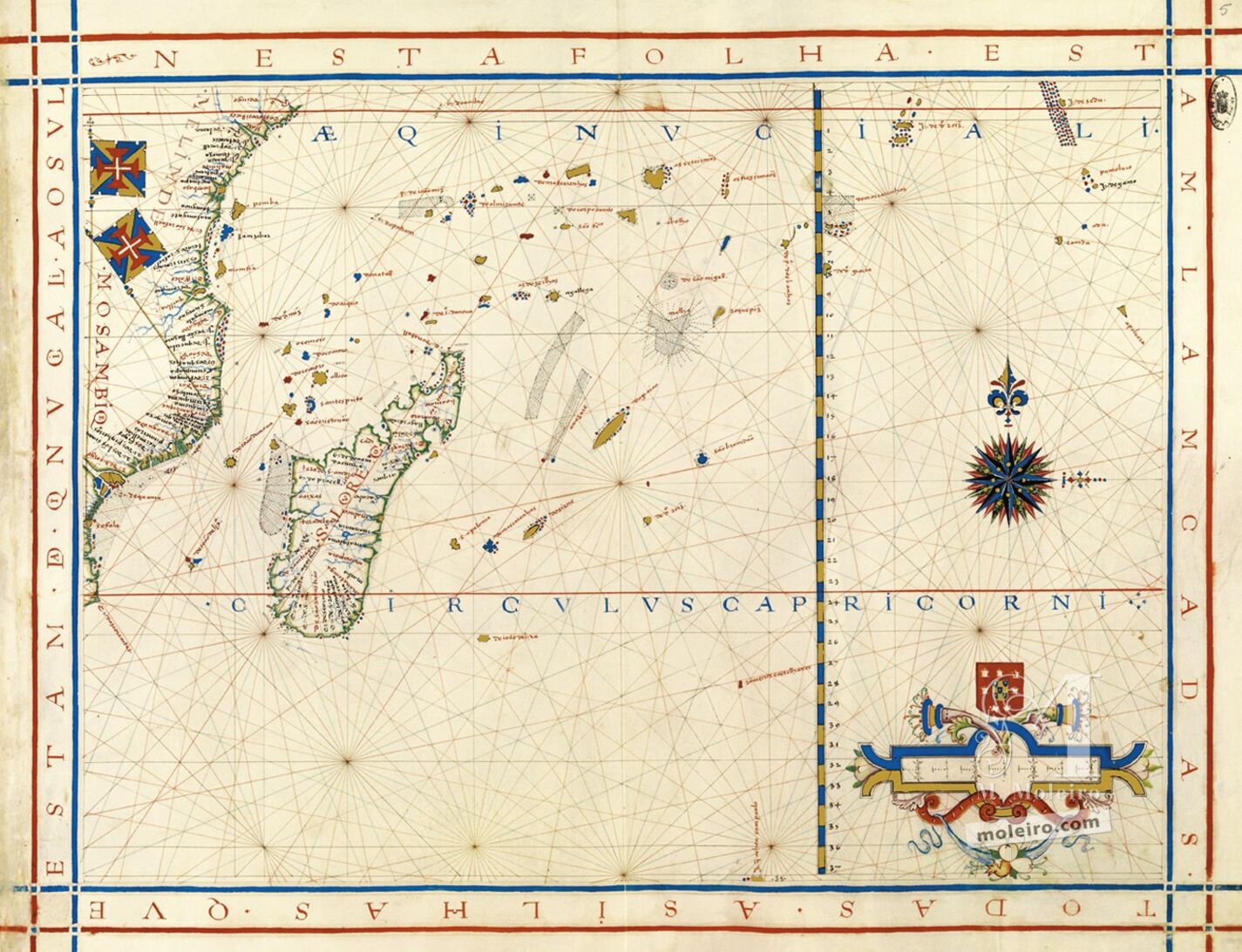Map No. 5. Madagascar and the islands to the south of the equinoctial line
Along with the next folio this map depicts the western Indian Ocean, dividing it with the line of the Equator, 37º towards the north and 37º towards the south, and is particularly dedicated to maritime routes between East Africa and India, using diverse archipelagos and islands as points of reference and stopovers on these routes.
In the Mozambique Channel for example the map indicates the João de Lisboa and João da Nova islands, in the direction of the Comoros Islands and the Seychelles. One can also find repeated toponyms for different islands in distinct locations, as is the case with the Amirante or Mascarenhas islands. Similarly, mythical islands “migrated” from the Atlantic to the Indian Ocean, such as St. Brendan’s Island, located at 17º S, or uncertain islands, with little information, such as the Romeiros dos Castelhanos Island, shown at 28º S. Near the scale of latitudes, at the base of the map, over the corner, one can observe a discreet but important caption: “Island found by St. Paul 38º”, referring to the discovery of the island by the Portuguese when a carrack named São Paulo was shipwrecked, which would later be depicted in Blaeu’s Dutch atlas.
The continental area, comprising just a fifth of the map, includes the coasts from the Zambezi delta to the coast of Somalia, up to the Equator (which serves as the northern edge of the map), with the island of Madagascar figuring prominently. There is no symbology indicating Portuguese possession of the Indian Ocean archipelagos. Only two flags with the cross of Christ have been placed on the coast of what would become Mozambique: in Sofala and on the Island of Mozambique.
João Carlos Garcia
Faculdade de Letras, Universidade do Porto
(Fragment of the Universal Atlas of Fernão Vaz Dourado commentary volume)
